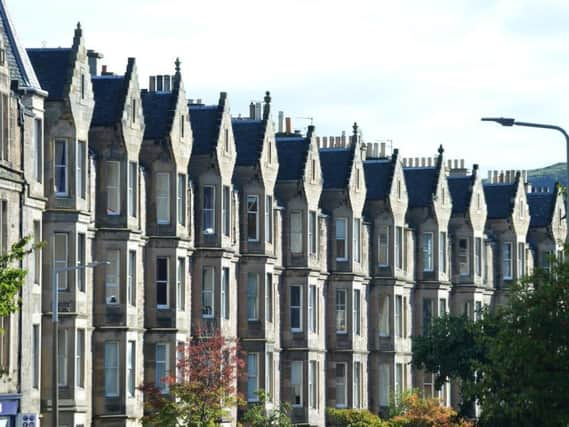Darker statistics behind rise in first-time buyers - David Alexander


In the same period, loans to first-time buyers went up from 38 per cent to 50 per cent of those granted.
So what’s not to like? Well, the first figures cannot be anything but welcome; who would not want to see more singles, couples and families become owner-occupiers? But the reality behind the figures highlights a situation that is less rosy.
Advertisement
Hide AdAdvertisement
Hide AdClearly, the actual rise in the number of first-time purchases has contributed to this category making up half of all new mortgages granted in 2019. Unfortunately, another key factor is the reduction in sales involving established home-owners trading up to larger properties – eg to provide additional space for a growing family or simply to enjoy a better quality of accommodation.


There is a deficit in second- and third-time buyers, the people who would normally move “onward and upwards” but are instead extending or refurbishing their existing properties – or making do with what they have with a few tweaks.
And the cause is the inequality in the rates of Land and Buildings Transaction Tax (LBTT). According to BoS, the highest average first-time buyer price in Scotland is just over £210,000.
Therefore, while most first-time buyers will pay little or no tax, the penalty for anyone buying a house at, say, £500,000, will be £23,000. To paraphrase Bill Clinton: “It’s the money, stupid”.
The irony is this is all so unnecessary. The government could retain the current concessions for first-time buyers, cut the rates of LBTT on higher-priced properties, and actually increase its income because of the additional transactions this would encourage. At the very least, it would be no worse off financially while stimulating the property market.
Negative effect
Regular readers will know this is an issue to which I frequently return. But it is impossible to fully emphasise the negative effect the current structure of LBTT has on the housing market, the wider economy and on the home lives of ordinary citizens.
More generally, the figures reveal that the affordability factor (ie the ratio of house prices to annual earnings) is lowest in the following council areas: North Ayrshire, East Ayrshire and Inverclyde (all 3.3); Renfrewshire, Stirling and South Ayrshire (all 3.5); North Lanarkshire and South Lanarkshire (3.6), East Renfrewshire (3.7); and West Dunbartonshire (3.8). However, in Stirling and East Renfrewshire the “affordability factor” is down to high earnings levels rather than inexpensive house prices.
The least affordable are Midlothian and East Lothian (5.2) and Edinburgh (5.1), suggesting Midlothian is taking up some of the excess of demand for housing in the capital.
Advertisement
Hide AdAdvertisement
Hide AdMeanwhile, the Association of Rental Letting Agents (Arla) has suggested that almost half a million properties in the UK currently available for long-term let could be switched to the holiday/short-stay sector as a result of a tax system favouring the latter.
That’s an awful lot of properties becoming unavailable to singles, couples and families looking for a roof over their heads. Arla has found that the number of active listings on Airbnb in the UK rose by a third to 223,000 in 2018 from 168,000 in 2017 and London has the largest single market, with the number of active listings – rising to 77,000 in 2019, while in 2019 Edinburgh had 32,000, up from 11,000 in 2016.
Therefore while the number for Edinburgh is only around 40 per cent that of London, the former has a little over 10 per cent of the population. Proportionally, therefore, the switch from long- to short-term rented residential in the Scottish capital has been much greater.
An incentive, therefore, for the Scottish Government to crack on with promised legislation to tackle this growing imbalance – and for local authorities to use what powers are currently available to them.
David Alexander is MD of DJ Alexander